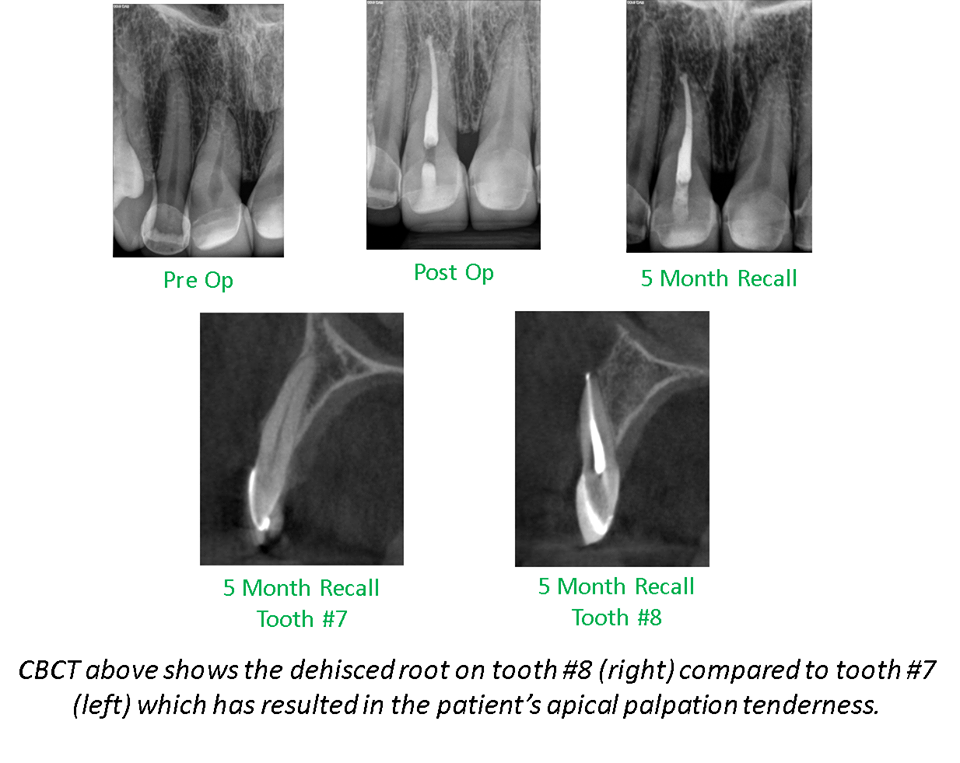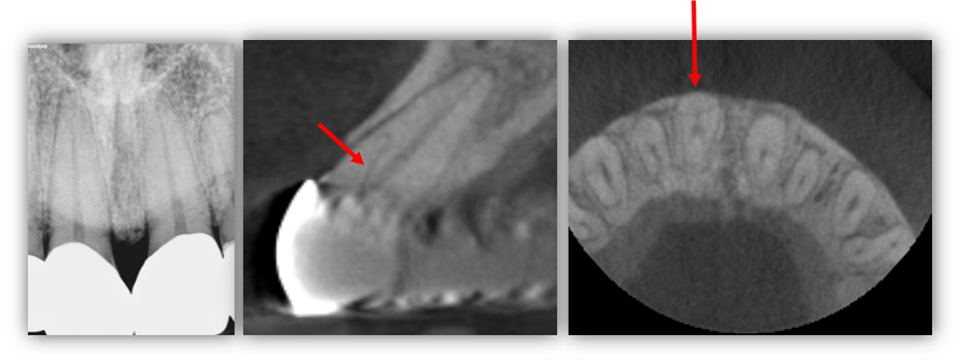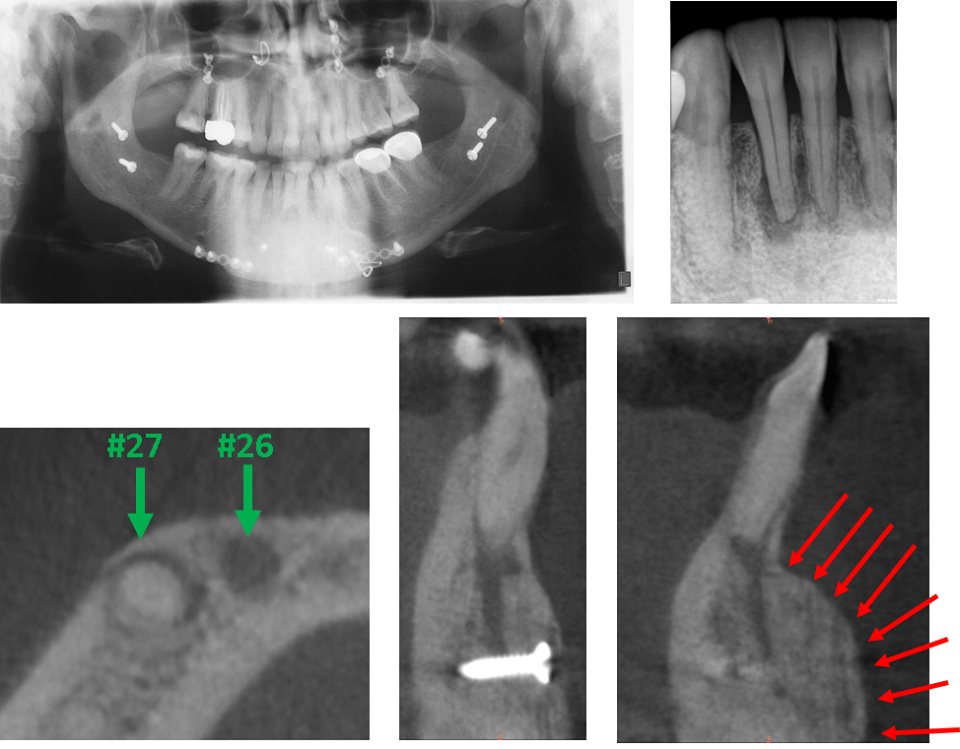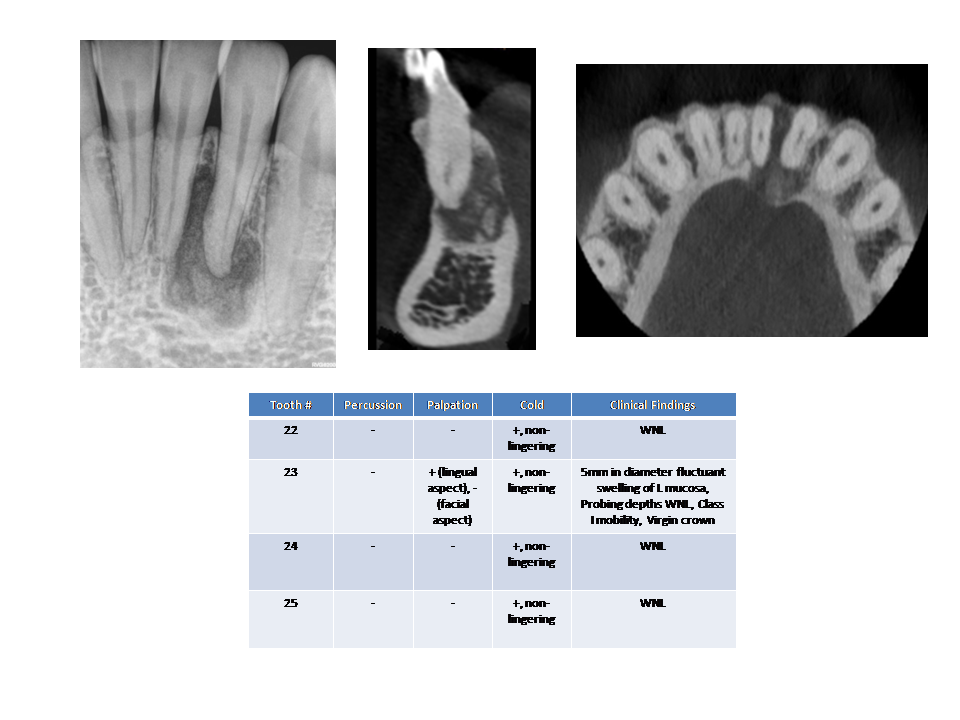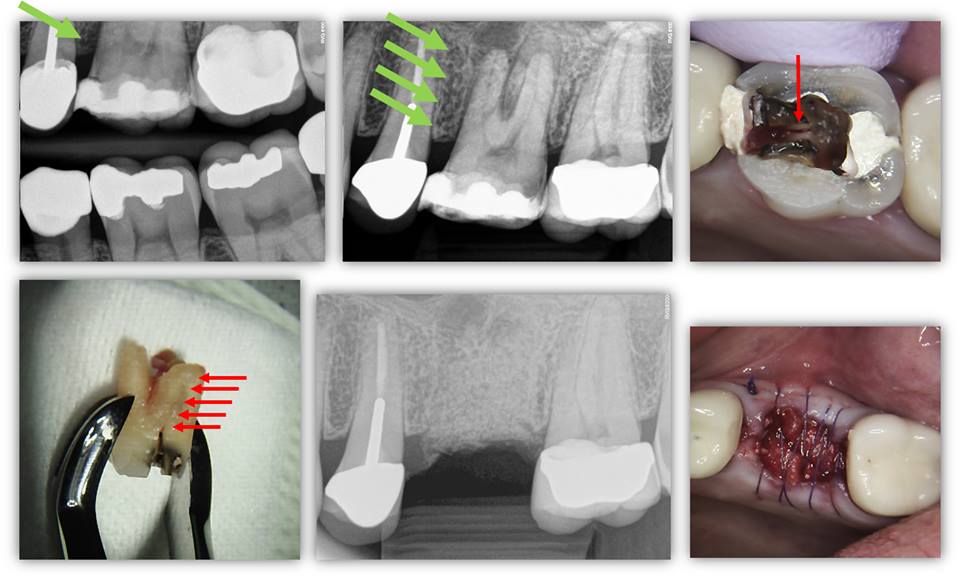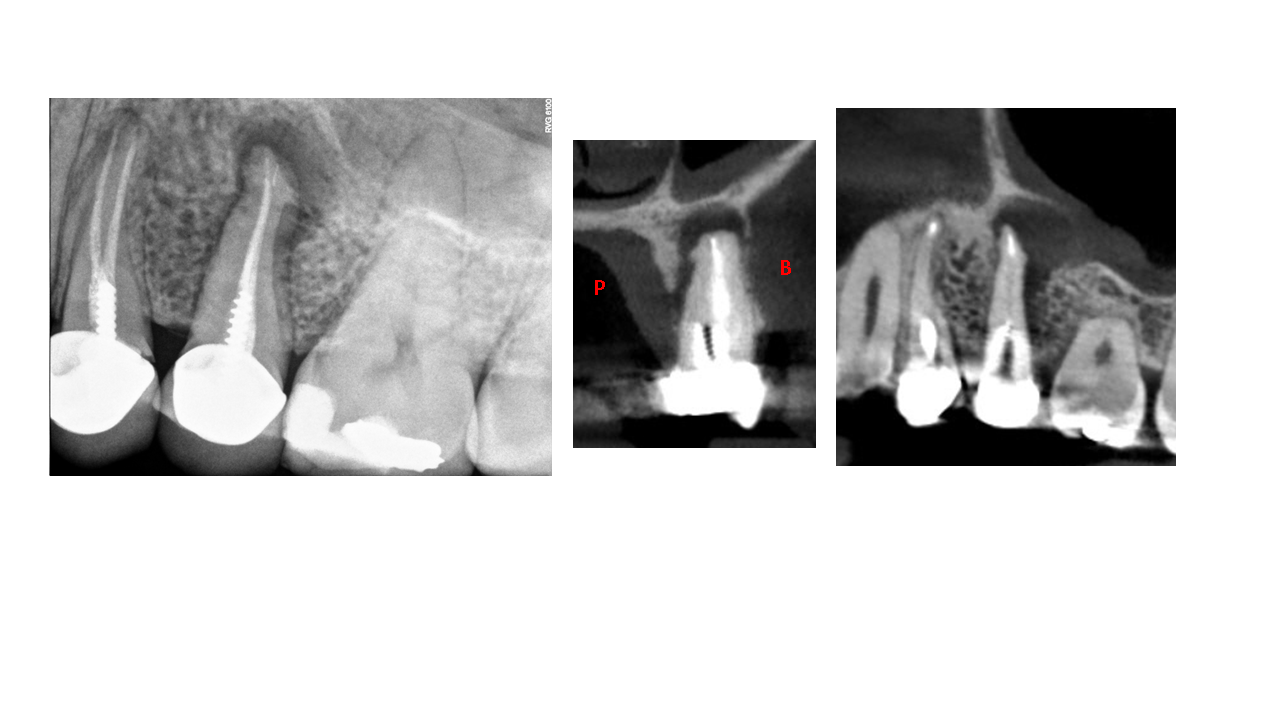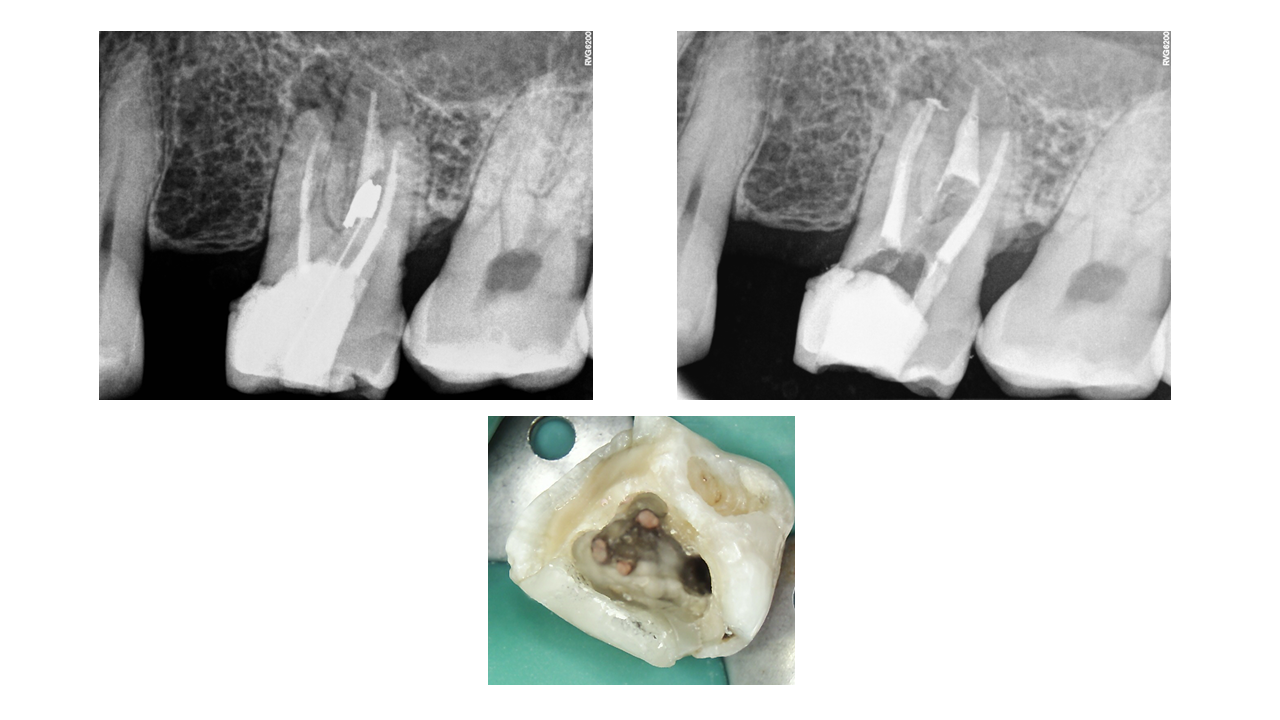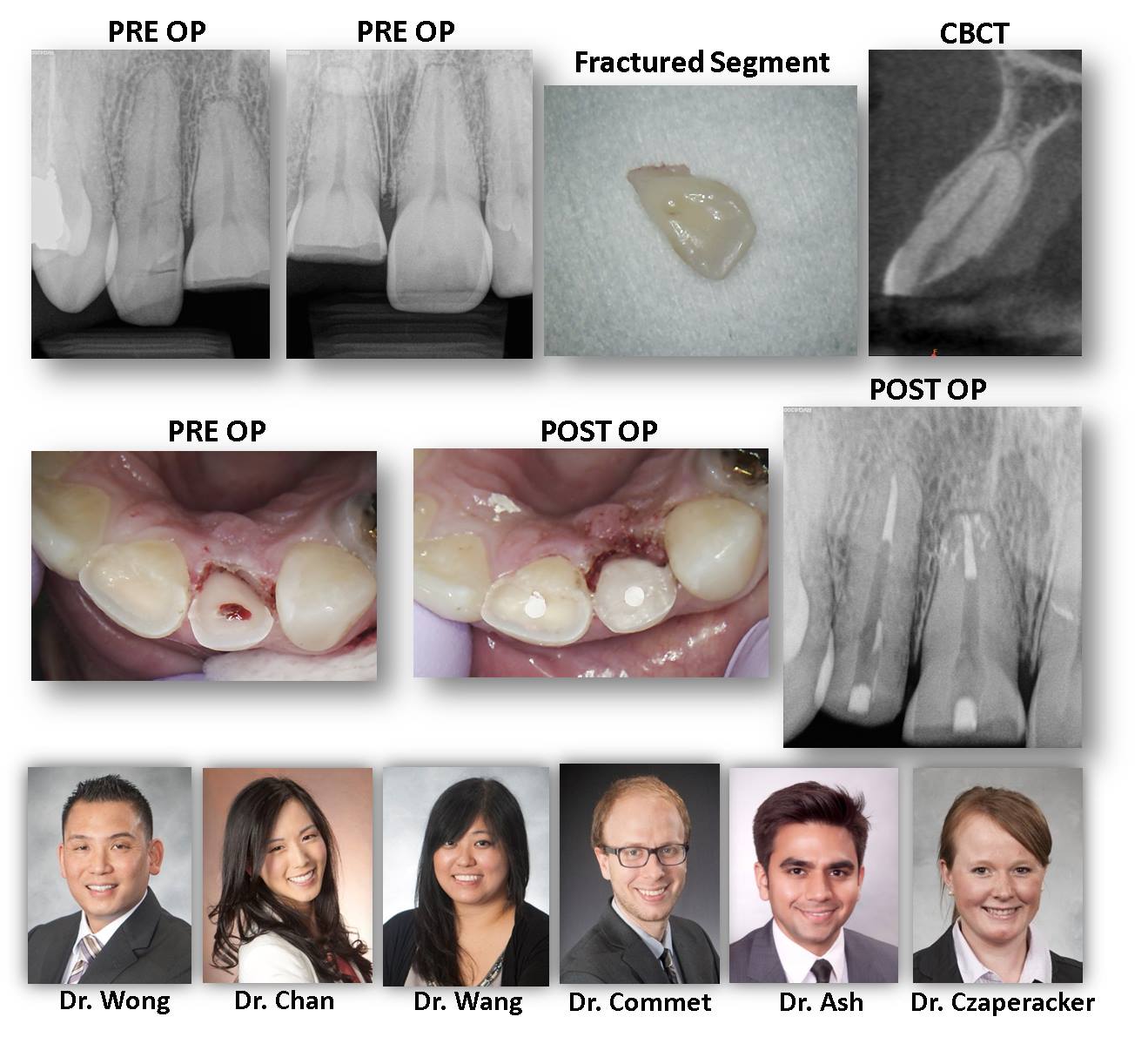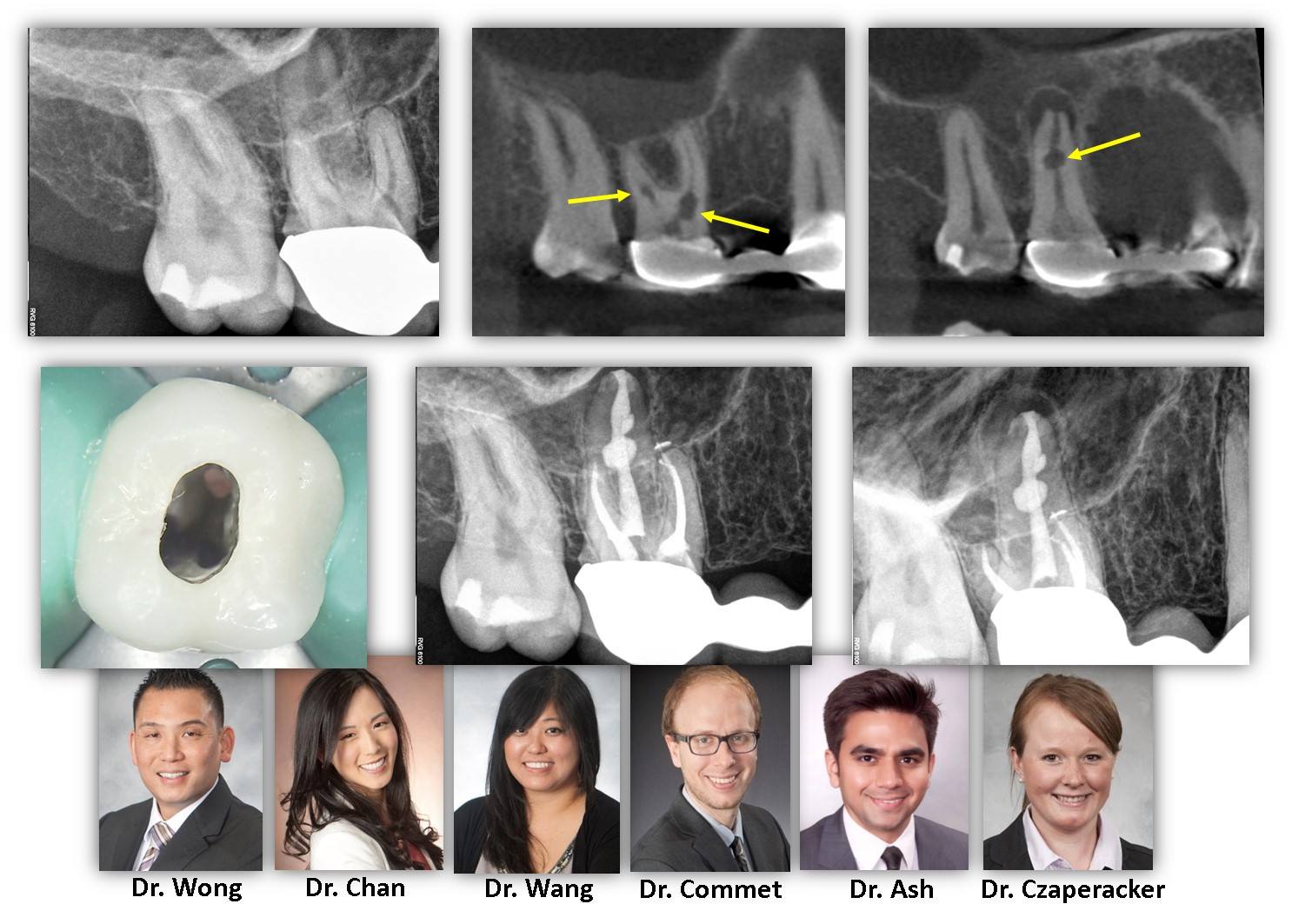PERSISTENT PAIN FOLLOWING RCT: Determining the etiology of persistent pain following a “well-done root canal” can be a challenge as there are many possible explanations. Such possibilities include an untreated canal, coronal leakage, fracture, or referred pain from another tooth or non-odontogenic structure. The attached images are of a 41 year-old patient who returned to our office 5 months following RCT tooth #8. The patient described her “persistent pain” as tenderness when she palpates the facial gingiva overlying apex #8. CBCT examination demonstrated that tooth #8 is facially inclined with its apex located outside of the bony housing of the maxilla—allowing […]
PERSISTENT PAIN FOLLOWING RCT
